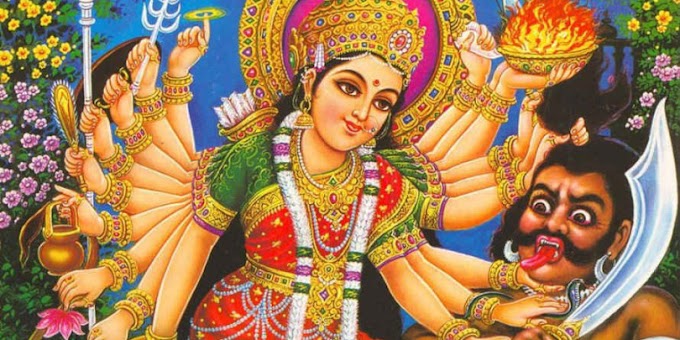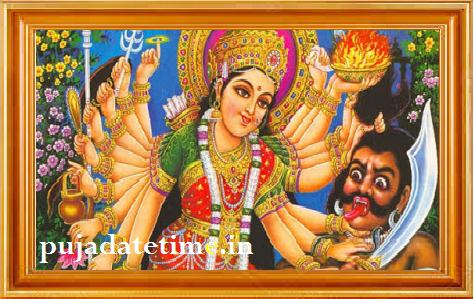The Bhagavad Gita is a sacred text of Hinduism that is considered one of the most important scriptures in Indian literature. It is a dialogue between the warrior prince Arjuna and his charioteer, Lord Krishna, that takes place on the battlefield of Kurukshetra before the start of a great war. The Gita is known for its spiritual teachings and philosophical insights, and has been studied and revered by people of all ages and backgrounds for thousands of years.
The Gita is written in the form of a conversation between Arjuna and Krishna, who is considered an avatar or incarnation of the god Vishnu. Arjuna is hesitant to go to war against his relatives, who are fighting on the other side of the battlefield, and he seeks guidance from Krishna. Krishna teaches Arjuna about the nature of the self, the universe, and the divine, and provides him with the wisdom he needs to carry out his duty as a warrior.
One of the most important teachings of the Gita is the concept of dharma, or one's duty in life. Krishna teaches Arjuna that it is his duty to fight the war, even though he may not want to, because it is his role as a warrior and his obligation to uphold the principles of justice and righteousness. This idea of fulfilling one's duty, even in the face of adversity, is a central theme in Hinduism and is a cornerstone of Indian culture.
Another key teaching of the Gita is the concept of karma, or the law of cause and effect. Krishna explains to Arjuna that every action has a consequence, and that one must accept the results of one's actions, whether they are positive or negative. This idea is closely tied to the concept of reincarnation, which is the belief that the soul is reborn after death into a new body. The Gita teaches that the actions we take in this life will determine the nature of our next life, and that we must strive to live in accordance with our dharma in order to achieve spiritual liberation.
The Gita also contains many philosophical ideas about the nature of the self and the universe. Krishna teaches Arjuna that the self is immortal and indestructible, and that it is merely the body that is born and dies. He also discusses the three gunas, or qualities of nature, which are sattva (purity and goodness), rajas (passion and activity), and tamas (darkness and inertia). These gunas are said to be present in all things in the universe, including humans, and they affect our thoughts, actions, and behavior.
Overall, the Bhagavad Gita is a deeply spiritual and philosophical text that has had a profound impact on Indian culture and spirituality. Its teachings on duty, karma, and the nature of the self are still relevant today, and many people continue to study and meditate on its verses. Whether you are a follower of Hinduism or simply interested in exploring the world's religions, the Gita is a fascinating and enlightening text that is well worth reading and contemplating.
Significance of Bhagavad Gita
The Bhagavad Gita is a significant text in Hinduism and is considered to be one of the most important scriptures in Indian literature. Its teachings and philosophy have influenced countless people and have played a key role in shaping Hindu culture and spirituality. Here are some of the main reasons why the Bhagavad Gita is so significant:
- Spiritual guidance: The Bhagavad Gita provides spiritual guidance to individuals seeking to understand the nature of the self, the universe, and the divine. Its teachings on dharma, karma, and the nature of the self have helped people find meaning and purpose in their lives and have inspired many to lead a life of righteousness and service.
- Unity of religions: The Bhagavad Gita has played a significant role in promoting the idea of the unity of all religions. Its teachings on the oneness of the divine and the interconnectedness of all beings have helped to bridge the gap between different faiths and promote a message of peace and harmony.
- Influence on Indian culture: The Bhagavad Gita has had a profound impact on Indian culture and spirituality. Its teachings have influenced literature, art, music, and dance, and have played a key role in shaping the cultural identity of India.
- Universal appeal: Despite being a Hindu text, the Bhagavad Gita has a universal appeal and has been embraced by people of all faiths and backgrounds. Its teachings on duty, ethics, and spirituality are relevant to people of all ages and can be applied to many different aspects of life.
- Philosophical insights: The Bhagavad Gita contains many profound philosophical insights that have inspired thinkers and scholars for centuries. Its teachings on the nature of reality, consciousness, and the self continue to be studied and debated by philosophers, theologians, and scientists today.
Overall, the Bhagavad Gita is a significant text that continues to inspire and enlighten people around the world. Its teachings on duty, karma, and the nature of the self are timeless and have the power to transform the lives of those who study and apply them.
Bhagavad Gita slokas
Here are some popular slokas (verses) from the Bhagavad Gita:
- "Karmanye Vadhikaraste, Ma Phaleshou Kadachana" - Chapter 2, Verse 47 Translation: "You have a right to perform your prescribed duty, but you are not entitled to the fruits of action. Never consider yourself to be the cause of the results of your activities, nor be attached to inaction."
- "Yada Yada Hi Dharmasya, Glanirva Bhavathi Bharatha; Abhyuthanam Adharmasya, Tadatmanam Srijami Aham" - Chapter 4, Verse 7 Translation: "Whenever there is decay of righteousness, O Bharata, and there is exaltation of unrighteousness, then I Myself come forth; For the protection of the good, for the destruction of the wicked, and for the establishment of righteousness, I am born in every age."
- "Vasamsi jirnani yatha vihaya Navani grhnati naro ’parani Tatha sarirani vihaya jirnany Anyani samyati navani dehi" - Chapter 2, Verse 22 Translation: "As a person puts on new garments, giving up old ones, similarly, the soul accepts new material bodies, giving up the old and useless ones."
- "Duhkhesv anudvigna-manah sukheshu vigata-sprihah; vita-raga-bhaya-krodhah sthita-dhir munir ucyate" - Chapter 2, Verse 56 Translation: "He who is serene and steadfast, who neither mourns nor desires, and who renounces both good and evil, is very dear to Me."
- "Samatvam yoga ucyate" - Chapter 2, Verse 48 Translation: "Yoga is equanimity of mind."
- "Brahmaarpanam Brahma Havir Brahmaagnau Brahmanaa Hutam; Brahmaiva Tena Gantavyam Brahmakarma Samaadhinaa" - Chapter 4, Verse 24 Translation: "Brahman is the offering; Brahman is the oblation poured out by Brahman; Brahman is the fire; Brahman is the goal to be reached by him who sees Brahman in all his actions."
- "Om Tat Sat" - Chapter 17, Verse 23 Translation: "That is the Truth (Ultimate Reality), and nothing but the Truth (Ultimate Reality)." This is a well-known mantra often recited at the end of spiritual practices in Hinduism.
These are just a few examples of the many profound slokas in the Bhagavad Gita. Each verse carries a deep meaning and offers guidance for those seeking spiritual growth and enlightenment.
Bhagavad Gita Quotes
- "The wise see that there is action in the midst of inaction and inaction in the midst of action."
- "Be steadfast in yoga, O Arjuna. Perform your duty and abandon all attachment to success or failure. Such evenness of mind is called yoga."
- "One who sees inaction in action, and action in inaction, is intelligent among men."
- "A man's own self is his friend. A man's own self is his foe."
- "The soul is neither born, nor does it die, nor is it ever destroyed."
- "The senses are higher than the body, the mind higher than the senses; above the mind is the intellect, and above the intellect is the Atman."
- "The self-controlled soul, who moves amongst sense objects, free from either attachment or repulsion, he wins eternal peace."
- "There is nothing lost or wasted in this life."
- "The happiness which comes from long practice, which leads to the end of suffering, which at first is like poison, but at last like nectar - this kind of happiness arises from the serenity of one's own mind."
- "The mind is everything. What you think, you become."
FAQ:
Q. What is the Bhagavad Gita?
Ans: The Bhagavad Gita is a sacred text of Hinduism that is considered one of the most important scriptures in Indian literature.
Q. What language is the Bhagavad Gita written in?
Ans: The Bhagavad Gita is written in Sanskrit, an ancient Indian language.
Q. What is the meaning of the word "Bhagavad"?
Ans: The word "Bhagavad" means "of God" or "divine".
Q. What is the Bhagavad Gita about?
Ans: The Bhagavad Gita is a dialogue between the warrior prince Arjuna and his charioteer, Lord Krishna, that takes place on the battlefield of Kurukshetra before the start of a great war. It is known for its spiritual teachings and philosophical insights.
Q. Who wrote the Bhagavad Gita?
Ans: The authorship of the Bhagavad Gita is uncertain, but it is believed to have been written by the sage Vyasa.
Q. When was the Bhagavad Gita written?
Ans: The exact date of the writing of the Bhagavad Gita is unknown, but it is believed to have been composed between the 5th and 2nd centuries BCE.
Q. What is the significance of the Bhagavad Gita?
Ans: The Bhagavad Gita is significant in Hinduism and Indian culture for its teachings on duty, karma, and the nature of the self.
Q. How many chapters are there in the Bhagavad Gita?
Ans: There are 18 chapters in the Bhagavad Gita.
Q. How many verses are there in the Bhagavad Gita?
Ans: There are 700 verses in the Bhagavad Gita.
Q. What is the main theme of the Bhagavad Gita?
Ans: The main theme of the Bhagavad Gita is dharma, or one's duty in life.
Q. What is the concept of karma in the Bhagavad Gita?
Ans: The concept of karma in the Bhagavad Gita is the law of cause and effect, where every action has a consequence and one must accept the results of their actions.
Q. What is the concept of moksha in the Bhagavad Gita?
Ans: The concept of moksha in the Bhagavad Gita is spiritual liberation, where one is freed from the cycle of birth and death and achieves union with the divine.
Q. What is the concept of yoga in the Bhagavad Gita?
Ans: The concept of yoga in the Bhagavad Gita is the practice of spiritual discipline and the path to liberation.
Q. What are the three gunas in the Bhagavad Gita?
Ans: The three gunas in the Bhagavad Gita are sattva (purity and goodness), rajas (passion and activity), and tamas (darkness and inertia).
Q. Who is Lord Krishna in the Bhagavad Gita?
Ans: Lord Krishna is an avatar or incarnation of the god Vishnu and is Arjuna's charioteer and spiritual guide in the Bhagavad Gita.
Q. What is the message of the Bhagavad Gita?
Ans: The message of the Bhagavad Gita is to live a life of duty, righteousness, and service, and to seek spiritual liberation through the practice of yoga and devotion.
Q. What is the importance of the Bhagavad Gita in Indian culture?
Ans: The Bhagavad Gita has had a profound impact on Indian culture and spirituality, and its teachings have influenced literature, art, music, and dance.
You May Like Also Also Like This




.jpg)





0 Comments